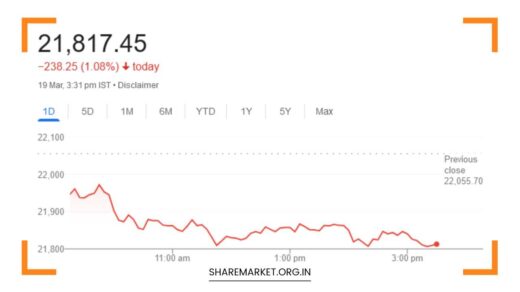Balanced Advantage Funds and Its Tax Benefits

Balanced Advantage Funds and Its Tax Benefits
Balanced Advantage Funds: A Smart Choice for Indian Investors
Balanced Advantage Funds (BAFs) have become increasingly popular among Indian investors as a versatile investment option that seeks to blend growth with stability.
These funds offer a dynamic approach to asset allocation, adjusting investments between equity and debt instruments based on market conditions.
This adaptability allows BAFs to capitalize on market opportunities while mitigating risks, making them an attractive choice for investors looking to balance capital appreciation with risk management. In addition to their potential for growth, BAFs offer notable tax benefits, further enhancing their appeal.
Understanding Balanced Advantage Funds
Balanced Advantage Funds employ a sophisticated investment strategy designed to manage risk while aiming for capital appreciation.
Unlike traditional mutual funds that follow a fixed asset allocation, BAFs dynamically adjust their equity and debt exposure based on prevailing market conditions.
- Dynamic Asset Allocation: BAFs are characterized by their ability to adjust asset allocation based on market dynamics. In bullish market conditions, where equity markets are performing well, the fund manager may increase the allocation to equities to capture potential gains. Conversely, during bearish phases, when market conditions are unfavorable, the fund may shift its focus towards debt instruments to protect investors’ capital. This flexible approach allows BAFs to adapt to changing market scenarios and manage risk more effectively.
- Diversification: Diversification is a core advantage of BAFs. By investing in a mix of equity and debt, BAFs spread investment risk across different asset classes. This diversification helps mitigate the impact of poor performance in any single asset class, providing a more balanced and resilient investment strategy. For example, when equity markets face a downturn, the debt component of the fund may provide stability and cushion the overall impact on the portfolio.
- Risk Management: The ability to adjust asset allocation based on market conditions is a significant risk management feature of BAFs. Fund managers can take advantage of favorable market conditions while protecting the portfolio during adverse times. This dynamic approach can potentially reduce the volatility of the fund compared to traditional equity or debt-focused investments. By maintaining a balanced exposure to both asset classes, BAFs aim to offer a smoother investment experience and mitigate extreme fluctuations in returns.
- Potential for Growth: BAFs invest a substantial portion of their portfolio in equities, which provides the potential for long-term capital appreciation. While the debt component adds stability, the equity exposure allows investors to benefit from the growth potential of the stock market. Over the long term, the growth potential from equities combined with the stability of debt can offer a balanced return profile, making BAFs an attractive option for investors with a medium to long-term investment horizon.
Tax Benefits of Balanced Advantage Funds
One of the key attractions of BAFs is their tax efficiency, which can provide significant advantages depending on the fund’s equity exposure.
The tax treatment of BAFs varies based on their allocation between equity and debt instruments, offering different benefits based on the proportion of each asset class.
- Higher Equity Allocation: If a Balanced Advantage Fund has an equity allocation exceeding 65%, it is classified as an equity-oriented fund. This classification entitles investors to benefit from lower long-term capital gains tax rates on equity investments. Under current Indian tax laws, long-term capital gains (LTCG) on equity investments held for more than one year are taxed at 10% without indexation benefits, provided the gains exceed Rs. 1 lakh in a financial year. This favorable tax treatment can enhance the overall returns of the investment.
- Debt-Oriented Bias: On the other hand, if the fund has a higher allocation towards debt instruments, investors can avail of indexation benefits on their debt holdings. Indexation helps adjust the purchase price of the debt investment for inflation, which effectively reduces the taxable capital gains. The long-term capital gains on debt investments are taxed at 20% with indexation benefits, which can be advantageous compared to the higher rates of short-term capital gains tax.
It is important for investors to consider their individual tax situation and holding period when investing in BAFs. Consulting with a tax advisor can provide personalized guidance to optimize the tax benefits based on individual circumstances and investment goals.
Suitable Investor Profile
Balanced Advantage Funds are generally suitable for investors with a moderate to high-risk appetite who have an investment horizon of at least five years.
These funds are designed for investors who seek a balanced approach to growth and stability, rather than those looking for short-term gains or guaranteed returns.
The dynamic nature of BAFs means they are not ideal for investors with very short-term goals or those who require immediate liquidity.
- Moderate to High-Risk Tolerance: Investors who are comfortable with a moderate to high level of risk may find BAFs appealing due to their potential for capital appreciation through equity exposure, coupled with the risk management benefits of debt instruments. BAFs are designed to manage risk while aiming for growth, making them suitable for investors who are willing to accept some level of market volatility in exchange for potential returns.
- Long-Term Investment Horizon: BAFs are best suited for investors with a longer investment horizon, typically five years or more. The dynamic allocation strategy is designed to take advantage of market cycles and achieve growth over the long term. Investors with shorter-term investment goals may find that BAFs are not aligned with their needs, as the fund’s performance can be influenced by market fluctuations over time.
- Need for Diversification: Investors who seek diversification across asset classes may find BAFs attractive. The combination of equity and debt in a single fund offers a diversified investment approach, which can help manage risk and achieve a balanced return profile. This diversification can be particularly beneficial for investors looking to avoid the concentration risk associated with investing solely in equities or debt instruments.
Key Considerations Before Investing in Balanced Advantage Funds
Before investing in Balanced Advantage Funds, it is crucial for investors to consider several factors to ensure that the fund aligns with their financial goals and risk tolerance.
- Fund Performance and Track Record: Evaluating the historical performance and track record of a BAF is essential. While past performance is not indicative of future results, it can provide insights into how the fund has managed different market conditions and its overall performance relative to its peers. Reviewing the fund’s performance over various market cycles can help assess its consistency and effectiveness in achieving its investment objectives.
- Fund Manager’s Expertise: The expertise and experience of the fund manager play a significant role in the success of a Balanced Advantage Fund. Investors should consider the fund manager’s track record, investment philosophy, and ability to navigate market fluctuations. A skilled fund manager can make informed decisions about asset allocation and risk management, which can impact the fund’s overall performance.
- Expense Ratio: The expense ratio of a BAF is an important consideration, as it directly impacts the net returns of the investment. The expense ratio includes management fees, administrative costs, and other expenses associated with managing the fund. Lower expense ratios can help improve overall returns, so investors should compare the expense ratios of different BAFs to ensure they are getting value for their investment.
- Fund Objectives and Strategy: Understanding the fund’s investment objectives and strategy is crucial. Different BAFs may have varying approaches to asset allocation, risk management, and investment selection. Investors should ensure that the fund’s strategy aligns with their own investment goals and risk tolerance. Reading the fund’s offer document, fact sheets, and other relevant information can provide valuable insights into its objectives and approach.
- Tax Implications: As mentioned earlier, the tax benefits of BAFs depend on their equity exposure. Investors should be aware of the tax implications based on their individual tax situation and the fund’s asset allocation. Consulting with a tax advisor can help optimize the tax benefits and ensure that the investment aligns with the investor’s overall tax planning strategy.
- Liquidity Needs: Investors should consider their liquidity needs when investing in BAFs. While BAFs are designed for long-term investment horizons, it is essential to evaluate the fund’s liquidity and redemption options. Understanding the exit load, if any, and the process for redeeming units can help manage liquidity needs and avoid any potential penalties.
Final Remarks
Balanced Advantage Funds offer a compelling investment proposition for Indian investors seeking a balanced portfolio that combines the potential for growth from equities with the stability of debt.
Their dynamic approach to asset allocation allows them to adapt to changing market conditions and manage risk effectively.
Additionally, the tax benefits associated with BAFs can enhance overall returns and provide an attractive investment option for those with a moderate to high-risk appetite and a long-term investment horizon.
Before investing in BAFs, it is essential for investors to conduct thorough research, consider their individual financial goals and risk tolerance, and consult with a qualified financial advisor.
This careful planning can help ensure that BAFs are a suitable addition to their investment portfolio and contribute to achieving their long-term financial objectives.
Disclaimer: This article is for informational purposes only and should not be construed as financial advice. Investors should consult with a qualified financial advisor before making any investment decisions.

















